Other Addictions
Video game addiction
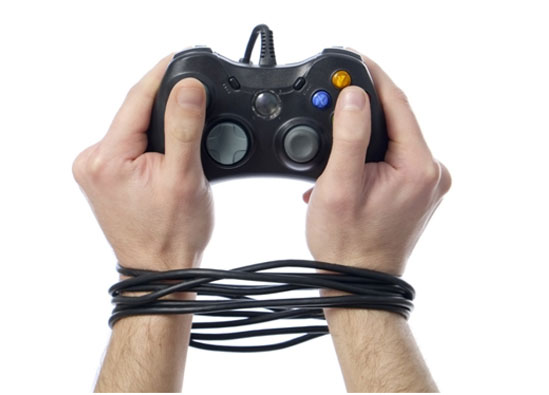
Video game addiction is hypothesized to be an excessive or compulsive use of computer games or video games, which interferes with a person's everyday life. Video game addiction may present itself as compulsive gaming, social isolation, mood swings, diminished imagination, and hyper-focus on in-game achievements, to the exclusion of other events in life. In May 2013, the American Psychiatric Association (APA) proposed criteria for video game addiction in the 5th ion of the Diagnostic and Statistical Manual of Mental Disorders, concluding that there was insufficient evidence to include it as an official mental disorder. However, proposed criteria for "Internet Gaming Disorder" were included in a section called "Conditions for Further Study". While Internet gaming disorder is proposed as a disorder, it is still discussed how much this disorder is caused by the gaming activity itself, or whether it is to some extent an effect of other disorders. Contradictions in research examining video game addictiveness may reflect more general inconsistencies in video game research. For example, while some research has linked violent video games with increased aggressive behavior other research has failed to find evidence for such links.
Possible causes

Some theorists focus on presumed built-in reward systems of the games to explain their potentially addictive nature. Many video games, particularly massively multiplayer online role-playing games and social network and mobile games, rely on a "compulsion loop" or "core loop", a cycle of activities that involve rewarding the player and driving them to continue through another cycle, retaining them in the game. The anticipation of such rewards can create a neurological reaction that releases dopamine into the body, so that once the reward is obtained, the person will remember it as a pleasurable feeling. This has been found similar to the same neurological reaction believed to be associated with gambling addiction. In reference to gamers such as one suicide in China, the head of one software association was quoted, "In the hypothetical world created by such games, they become confident and gain satisfaction, which they cannot get in the real world."
Griffiths has also proposed that another reason why online video games are potentially addictive is because they "can be played all day every day". The fact that there is no end to the game can feel rewarding for some, and hence players are further engaged in the game. A high prenatal testosterone load may be a risk factor for the development of video game addiction in adulthood.
Preliminary diagnosis
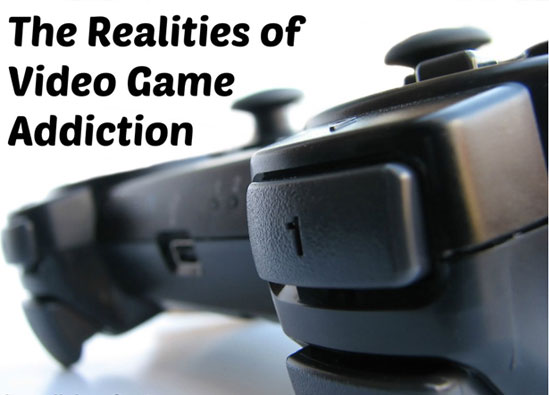
The American Psychiatric Association decided that enough evidence exists to propose the potential disorder of video game addiction as a "condition requiring further study" in the Diagnostic and Statistical Manual of Mental Disorders as Internet gaming disorder. Video game addiction is a broader concept than internet gaming addiction, but most video game addiction is associated with Internet gaming. APA suggests, like Khan, the effects (or symptoms) of video game addiction may be similar to those of other proposed psychological addictions. Video game addiction may be an impulse control disorder, similar to compulsive gambling APA explains why Internet gaming disorder has been proposed as a disorder: This decision was based upon the large number of studies of this condition and the severity of its consequences. .... Because of the distinguishing features and increased risks of clinically significant problems associated with gaming in particular, the Workgroup recommended the inclusion of only internet gaming disorder in Section 3 of the DSM-5.
Excessive use of video games may have some or all of the symptoms of drug addiction or other proposed psychological addictions. Some players become more concerned with their interactions in the game than in their broader lives. Players may play many hours per day, neglect personal hygiene, gain or lose significant weight due to playing, disrupt sleep patterns to play resulting in sleep deprivation, play at work, avoid phone calls from friends, or lie about how much time they spend playing video games. APA has developed 9 criteria for characterizing the proposed Internet gaming disorder:
- Pre-occupation. Do you spend a lot of time thinking about games even when you are not playing, or planning when you can play next?
- Withdrawal. Do you feel restless, irritable, moody, angry, anxious or sad when attempting to cut down or stop gaming, or when you are unable to play?
- Tolerance. Do you feel the need to play for increasing amounts of time, play more exciting games, or use more powerful equipment to get the same amount of excitement you used to get?
- Reduce/stop. Do you feel that you should play less, but are unable to cut back on the amount of time you spend playing games?
- Give up other activities. Do you lose interest in or reduce participation in other recreational activities (hobbies, meetings with friends) due to gaming?
- Continue despite problems. Do you continue to play games even though you are aware of negative consequences, such as not getting enough sleep, being late to school/work, spending too much money, having arguments with others, or neglecting important duties?
- Deceive/cover up. Do you lie to family, friends or others about how much you game, or try to keep your family or friends from knowing how much you game?
- Escape adverse moods. Do you game to escape from or forget about personal problems, or to relieve uncomfortable feelings such as guilt, anxiety, helplessness or depression?
- Risk/lose relationships/opportunities. Do you risk or lose significant relationships, or job, educational or career opportunities because of gaming?
One of the most commonly used instruments for the measurement of addiction, the PVP Questionnaire (Problem Video Game Playing Questionnaire), was presented as a quantitative measure, not as a diagnostic tool. According to Griffiths, "all addictions (whether chemical or behavioral) are essentially about constant rewards and reinforcement". Griffiths proposed that addiction has six components: salience, mood modification, tolerance, withdrawal, conflict, and relapse. But, APA's 9 criteria for diagnosing Internet gaming disorder were made by taking point of departure in 8 different diagnostic/measuring tools proposed in other studies. Thus, APA's criteria attempt to condense the scientific work on diagnosing Internet gaming disorder.
The World Health Organization (WHO) has also proposed possible categories for "gaming disorder" for the forthcoming International Compendium of Diseases. A group of 26 scholars wrote an open letter to the WHO, suggesting that the proposed diagnostic categories lacked scientific merit and were likely to do more harm than good.
Addiction vulnerability
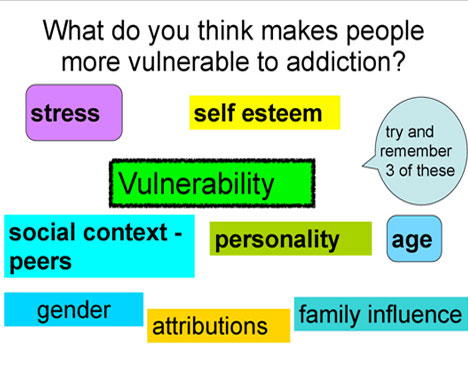
Addiction vulnerability is the genetic, physiological, or psychological predisposition to engage in addictive behaviors. A vulnerability to addiction may lead to an increased risk for a substance dependence. Addictions can arise in both a chemical and a behavioral manner. A chemical addiction refers to a physical substance dependence1 where a behavioral addiction involves a psychological dependence. Genetics has been shown to account for 40–60% of a person’s likelihood to develop an addiction.23 Research is working toward establishing a comprehensive picture of the neurobiology of addiction vulnerability, including all factors at work in propensity for addiction.
Substance addiction
A physical, chemical addiction refers to the repeated and uncontrollable abuse of drugs or alcohol. To be physically addicted to a substance means that the normal release of neurotransmitter has been obstructed by the presence of a chemical of abuse. The reward center of the brain gets over stimulated with the pleasurable response of drug or alcohol use and adapts to accommodate these increase levels of chemical input. This creates a neural environment for addiction development. Natural neural reuptake receptors become desensitized to the drug due to repeated exposure and have to adapt to function properly only in the presence of compounding amounts of the substance. According to the American Psychiatric Association, substance use disorder is a complex behavioral disorder characterized by compulsive drug use,
(c) using larger amounts or over a longer period of time than intended; (d) a persistent desire or unsuccessful efforts to cut down or control use; (e) spending a great deal of time obtaining, (f) using or recovering from the effects of the substance; (g) reducing or giving up important activities due to substance use; and (h) persistent physical or psychological problem that are likely due to or exacerbated by the substance.
With the revised ion of the Diagnostic and Statistical Manual of Mental Disorders (DSM-5) there has been a shift from the traditional categorization of addiction as substance abuse and/or dependence to a more dimensional model that combines the diagnostic criteria from both “abuse” and “dependence” into a singular disorder. The criteria for diagnosis remains relatively the same in the DSM-5 with a few changes such as the removal of “recurrent legal problems” criteria, the addition of “craving or a strong desire to use the substance,” and the threshold for diagnosis has been revised to include positive identification with two or more criteria. The shift from a categorical to a more dimensional approach exemplifies the evolving conceptualization of addiction in the field.

Psychological consequences
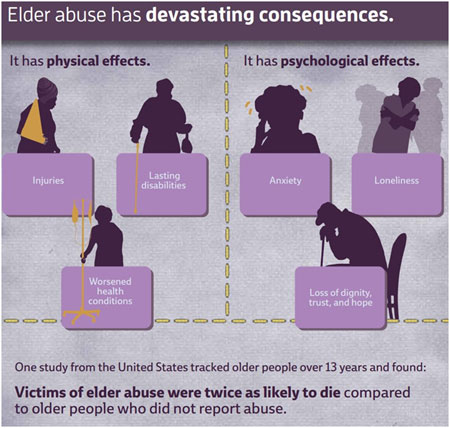
The psychological and mental effects can prove intense and plague an individual for years. These include hopelessness, powerlessness, isolation, shame, depression, self-loathing, guilt, suicidal thoughts, suicide attempts, and/or self-injurious behaviors.
Relational consequences
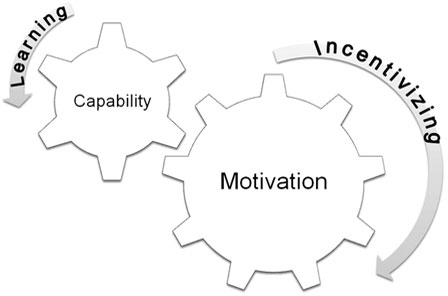
Food addiction impacts relationships, especially those within the family. This is because the person with the addiction is vastly more involved with food than with people – it becomes their safest, most important and meaningful relationship. Other connections to friends and family take a back seat. This often leads to a deep sense of isolation from others.